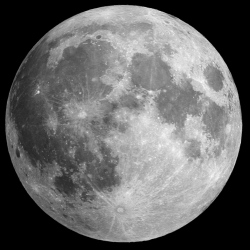
SpaceIL’s lunar lander is go for launch as a secondary payload on a Falcon 9 that’s due to send a telecommunications satellite into geosynchronous orbit, Seattle-based Spaceflight announced. The launch, expected late this year or sometime next year, would represent the first Spaceflight rideshare mission to go beyond low Earth orbit.
And Israel-based SpaceIL’s mission would represent the first non-governmental landing on the moon.
Spaceflight timed its announcement to coincide with Euroconsult’s World Satellite Business Week conference in Paris. It said rideshare opportunities to geosynchronous transfer orbit, or GTO, would be made available every 12 to 18 months, or as customer demand requires.
The primary payload for Spaceflight’s first GTO mission is thought to be the PSN-6 telecommunications satellite, which was built for Indonesia’s PT Pasifik Satelit Nusantara by SSL, a Maxar Technologies subsidiary. This would be the first combined launch for Spaceflight and SSL.
“We’re focused on getting our customers’ spacecraft into orbit in the most expeditious, cost-effective manner possible,” Spaceflight President Curt Blake said in a news release. “The rideshare model is beneficial to everyone; the primary spacecraft as well as all the secondaries pay less than if they contracted to launch individually. In addition, working with a reliable partner like SSL to fulfill our first GTO mission increases our ability to service this growing destination. We’re looking forward to making GTO a routine and affordable destination for our clients.”
The mission plan calls for several of Spaceflight’s rideshare payloads to be deployed from geosynchronous transfer orbit. SSL’s host spacecraft would then continue onward to geosynchronous orbit, where the remaining rideshare satellites would be separated.
Spaceflight didn’t identify any of the payloads other than SpaceIL’s, and didn’t disclose the prices that were paid. Spaceflight, which provides satellite rideshare and mission management services in league with a wide range of launch providers, is a subsidiary of Seattle’s Spaceflight Industries.
David Bernstein, senior vice president of program management at SSL, hailed Spaceflight’s “innovative approach to aggregating launches and bringing a more cost-effective launch model to the industry as a result.”
“Working as a team with Spaceflight and SpaceX, we are enabling a unique mission that ultimately accomplishes a translunar injection, prior to dropping off other payloads on our way to geostationary orbit for the primary communications satellite,” Bernstein said.
SpaceIL was one of the competitors in the $30 million Google Lunar X Prize, which was terminated early this year when organizers determined that none of the teams could get to the moon before the March deadline.
During a July news conference in Israel, SpaceIL’s team leaders said they expected to have their spacecraft launched by the end of this year, kicking off an energy-efficient, two-month trip to the moon. At the time, their schedule called for the 600-kilogram (1,300-pound) lander to touch down on the lunar surface on Feb. 13, 2019. After landing, the spacecraft would send back photos and videos as well as data about the moon’s magnetic field.
SpaceIL’s organizers say about $88 million has been invested in the effort, mostly from private donors but also from organizations including the Israel Space Agency; Israeli’s Ministry of Science, Technology and Space; and the Weizmann Institute of Science. SpaceIL President Morris Kahn, an Israeli billionaire investor, reportedly has donated $27 million.
